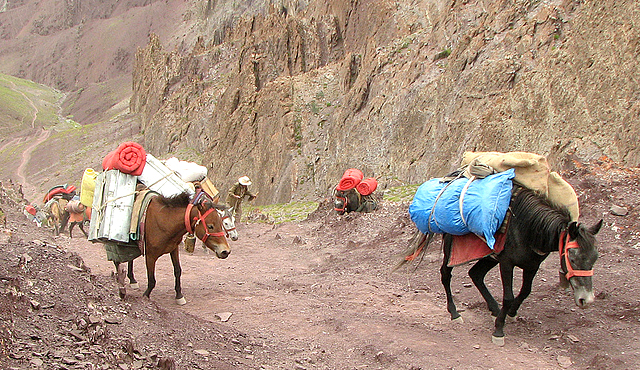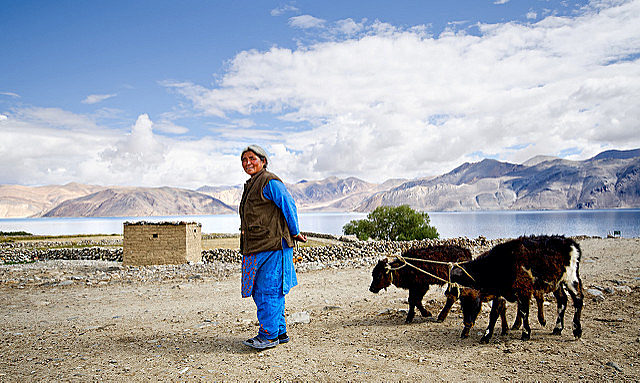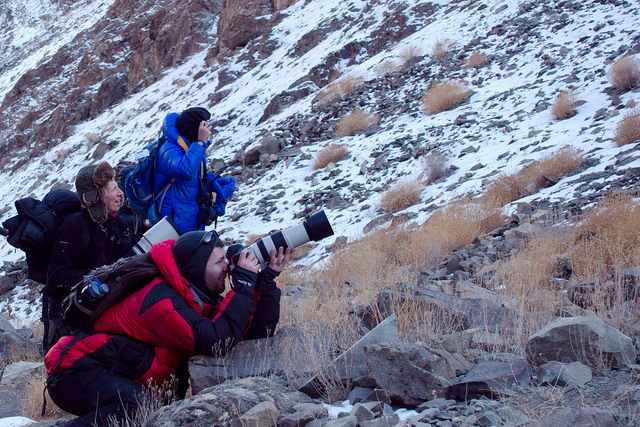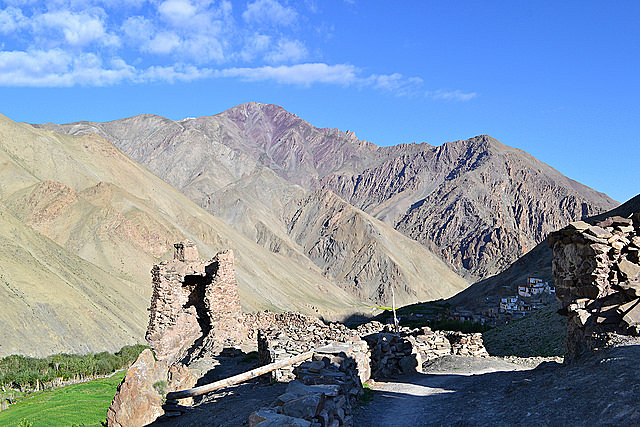Tourism offers many benefits to the mountain villages of Ladakh—far more than just infusions of outside cash, according to a report posted last week on a website from India. The author of the article visited the remote village of Rumbak, which is 6 miles from the end of the motor road in the Hemis National Park, to investigate. The reporter, Sharada Balasubramanian, hiked into the village to talk with the Ladakhi farmers and see what their perspectives were on the increased tourism they had encouraged. How has it impacted their lives? What benefits has it had for the wildlife in the park, especially its iconic predator species, the snow leopard?

The reporter’s guide, Tsewang Gyaltsan, a 33-year old from Rumbak, told her while they hiked into the community that the villagers normally use mules to transport goods such as sacks of groceries, vegetables, and flour from the end of the road to the village. Solar panels, which they have installed to provide some electrification, were brought in on mules so they had to be the right size for that mode of transportation. The gas cylinders that the villagers use for power must also be carried in and out the same way.
A continuing, major issue for the villagers has been the loss of their livestock to snow leopards, which tend to kill off all the edible animals within reach rather than just the one they want for dinner that day. But the leopards are a major draw for tourists, so officials decided to try and reduce the numbers of livestock. Jigmet Takpa, the Chief Conservator of Forests for the Leh District, figured that providing an alternative source of livelihood might reduce the need for people to continue raising so many animals.

The problem of tourism, according to the writer, has been that much of the income from tourists remains with the travel companies and the hotels. Trekkers, who are likely to visit remote spots such as Rumbak, tend to carry their own camping equipment and supplies and spend very little in the mountain villages. Tsewang Namgail, the Director of the Snow Leopard Conservancy India Trust (SLC-IT), said that some villagers suggested that they try encouraging trekkers to stay in the village homes and accept their hospitality.
Officials surveyed some trekkers to see if they would be interested and shared the positive results with the people of Rumbak. The villagers began their homestay experiment a couple years into the new century. Although some of them were initially hesitant, they soon became enthusiastic about the idea. Local and state government officials helped by training the people in such skills as identifying wildlife, providing hospitality to international guests, and assuming appropriate behavior patterns with visitors. They trained Gyaltsan how to identify the local birds and on ways to locate the snow leopards, two interests of many tourists.

Officials encouraged the villages participating in the homestay initiative to prepare their own rules and regulations for the trekkers, and to form a regional administrative committee by electing one person from each village to represent it. The people should decide on their own names for local management committees. The people of Rumbak named their committee the Youth Association for Development of Hemis National Park.
Most of the developments since the SLC-IT program began appear to have been successful. Direct conflicts with the snow leopards were reduced when the agency provided wire mesh to the villagers so they could better fence in their cattle—and fence out the leopards. The agency helped the people establish a bank account as an insurance fund to cover losses to livestock from leopards, and it matched the money provided by the villagers in that fund.

Namgail, the SLC-IT official, explained the way the loss compensation fund should work, and he told the reporter that today the villagers own fewer livestock. But whenever there are losses due to the snow leopards, the villagers handle the claims themselves.
The forestry official, Takpa, said that the snow leopard homestay scheme has provided benefits in other ways. Since people are trying to provide good, nutritious meals to the trekkers, they are also learning to prepare and cook better foods for themselves. “When they cook for trekkers, they also eat a healthy and wholesome meal,” he said. Nwang Yongtan, a 75-year old farmer from Rumbak, agreed and added that they used to walk considerable distances to find wood to cut and sell for the income it would provide. No longer.

He said that the homestays have improved their living conditions. A villager might have had an annual income of Rs 20,000 before the homestay project started; now, Gyaltsan said, he earns more than six times that amount each year. He is able to send his children to school in Leh, which is over the mountains about 10 miles to the northeast as the Lammergeier flies.
The women of Rumbak also benefit. Tashi Tsonma said that she used to walk long distances to find wood for heating water. Now, solar heaters supply hot water. Another villager enjoys having lighting at night, which provides a new level of comfort for all. Furthermore, the women are creating handicrafts, such as snow leopard souvenirs, and selling them to the trekkers.
Another change brought about by the homestay project is that when there are guests in the homes, the men cannot drink as much as they used to. Avoiding alcohol is becoming a habit in the community.